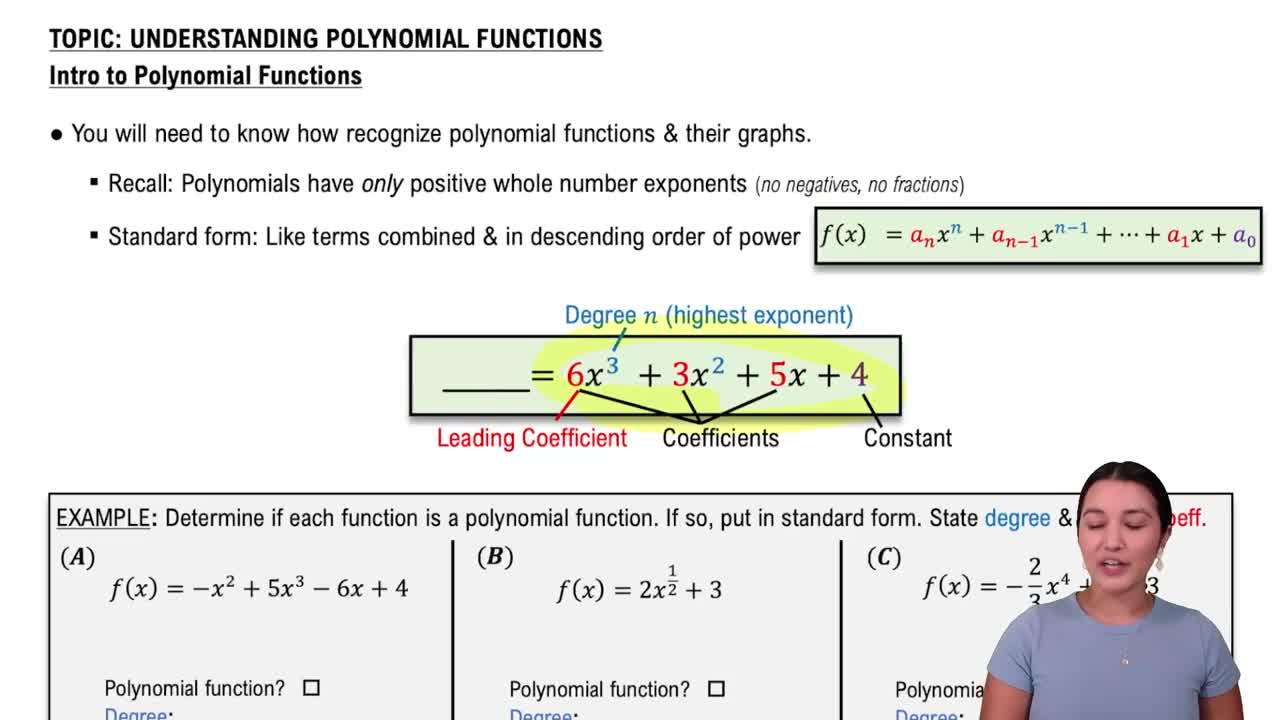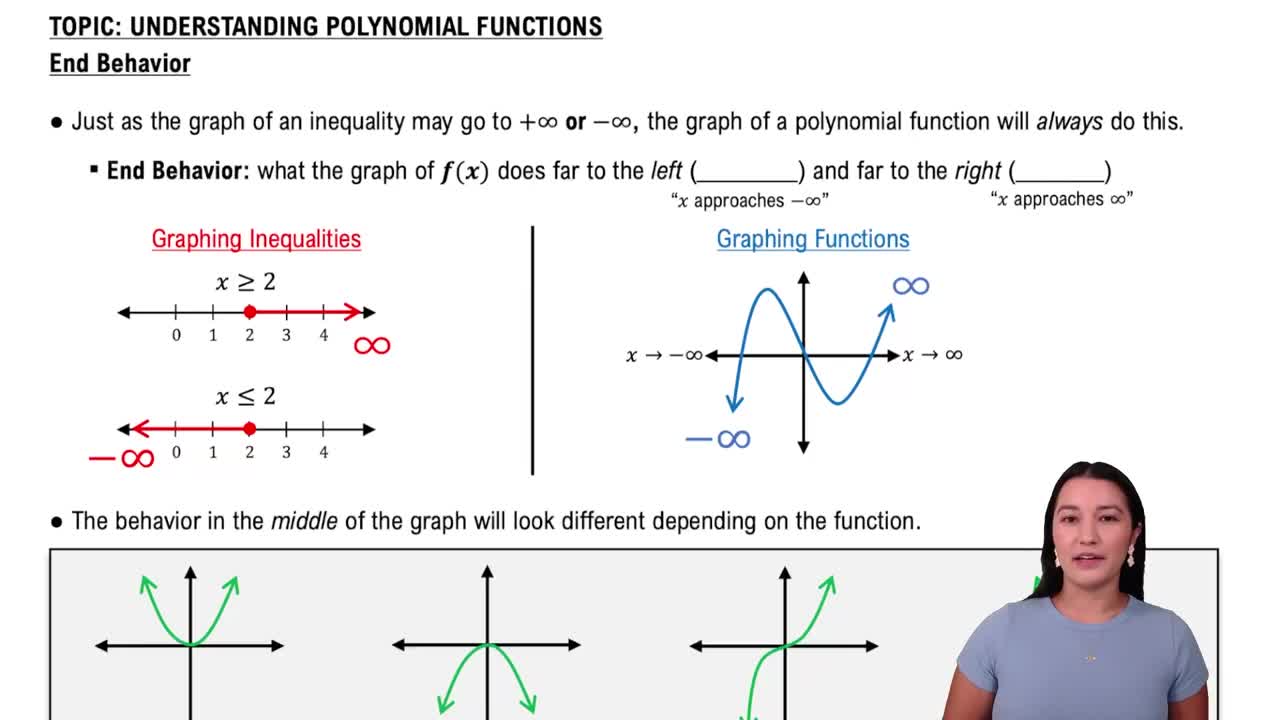Table of contents
- 0. Review of Algebra4h 16m
- 1. Equations & Inequalities3h 18m
- 2. Graphs of Equations43m
- 3. Functions2h 17m
- 4. Polynomial Functions1h 44m
- 5. Rational Functions1h 23m
- 6. Exponential & Logarithmic Functions2h 28m
- 7. Systems of Equations & Matrices4h 6m
- 8. Conic Sections2h 23m
- 9. Sequences, Series, & Induction1h 19m
- 10. Combinatorics & Probability1h 45m
4. Polynomial Functions
Understanding Polynomial Functions
Problem 58b
Textbook Question
For each polynomial function, identify its graph from choices A–F. ƒ(x)=-(x-2)^2(x-5)^2
 Verified step by step guidance
Verified step by step guidance1
Identify the degree of the polynomial function. Since the function is \( f(x) = -(x-2)^2(x-5)^2 \), it is a quartic polynomial (degree 4) because the highest power of \( x \) is 4.
Determine the end behavior of the polynomial. Since the leading coefficient is negative (due to the negative sign in front of the polynomial), the graph will fall to the left and right.
Identify the roots of the polynomial. The roots are \( x = 2 \) and \( x = 5 \), each with multiplicity 2, indicating that the graph will touch the x-axis at these points and turn around.
Analyze the behavior at the roots. Since both roots have even multiplicity, the graph will touch the x-axis at \( x = 2 \) and \( x = 5 \) and bounce back in the same direction.
Sketch the general shape of the graph using the information: a quartic polynomial with a negative leading coefficient, roots at \( x = 2 \) and \( x = 5 \) with even multiplicity, and end behavior falling on both sides.
Recommended similar problem, with video answer:
 Verified Solution
Verified SolutionThis video solution was recommended by our tutors as helpful for the problem above
Video duration:
7mPlay a video:
Was this helpful?
Key Concepts
Here are the essential concepts you must grasp in order to answer the question correctly.
Polynomial Functions
A polynomial function is a mathematical expression involving a sum of powers in one or more variables multiplied by coefficients. The general form is f(x) = a_n*x^n + a_(n-1)*x^(n-1) + ... + a_1*x + a_0, where 'n' is a non-negative integer. Understanding the degree and leading coefficient of a polynomial helps predict its end behavior and the number of roots.
Recommended video:

Introduction to Polynomial Functions
Factoring and Roots
Factoring a polynomial involves expressing it as a product of simpler polynomials. The roots of the polynomial are the values of 'x' that make the function equal to zero. In the given function, f(x) = -(x-2)^2(x-5)^2, the roots are x = 2 and x = 5, each with a multiplicity of 2, indicating that the graph touches the x-axis at these points without crossing it.
Recommended video:

Imaginary Roots with the Square Root Property
Graph Behavior and Transformations
The graph of a polynomial function exhibits specific behaviors based on its degree and the nature of its roots. For even multiplicities, like in this case, the graph will touch the x-axis at the roots and turn around, rather than crossing it. Additionally, the negative leading coefficient indicates that the graph will open downwards, affecting its overall shape and intercepts.
Recommended video:

Intro to Transformations

 6:04m
6:04mWatch next
Master Introduction to Polynomial Functions with a bite sized video explanation from Callie
Start learningRelated Videos
Related Practice


















